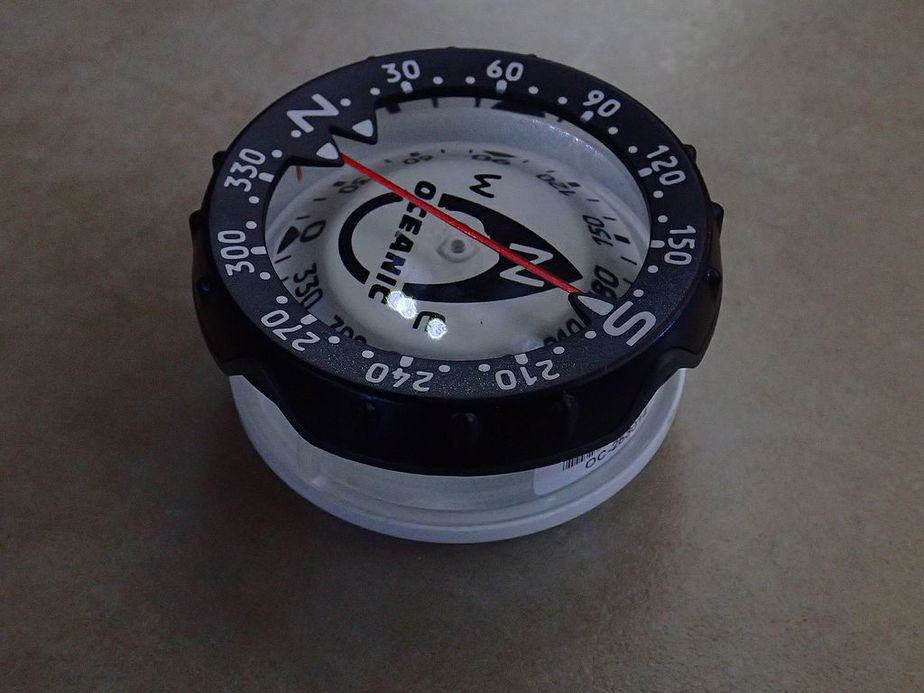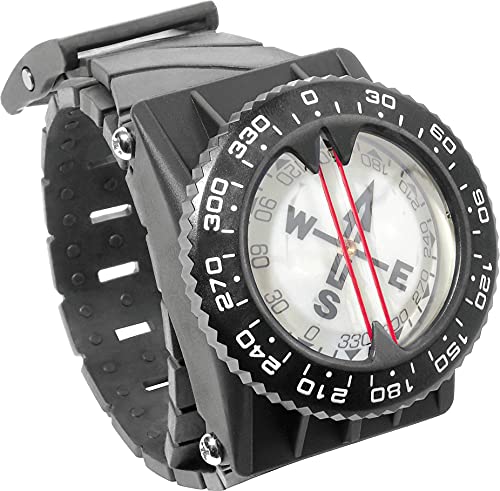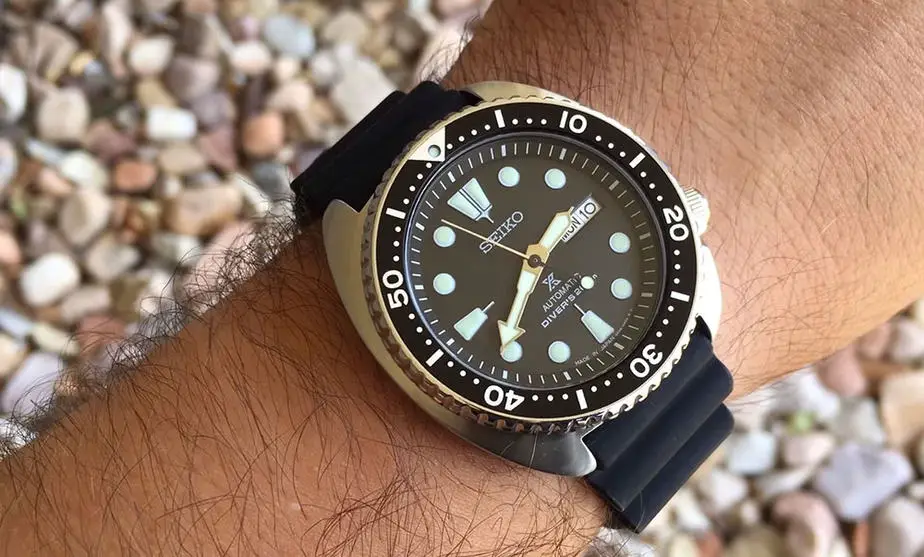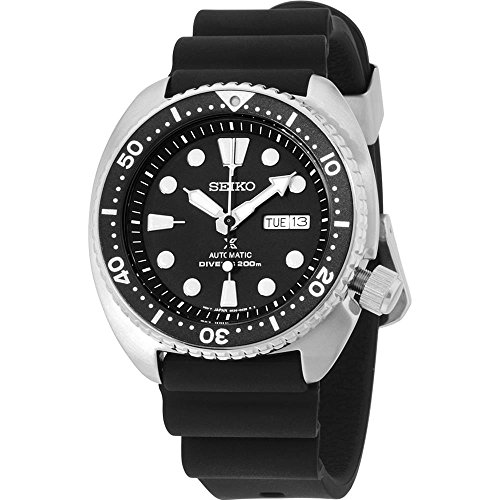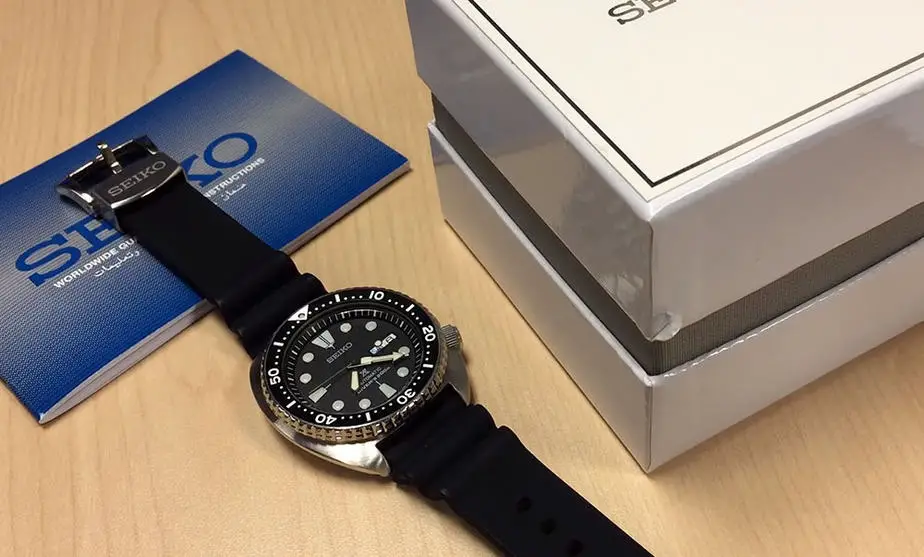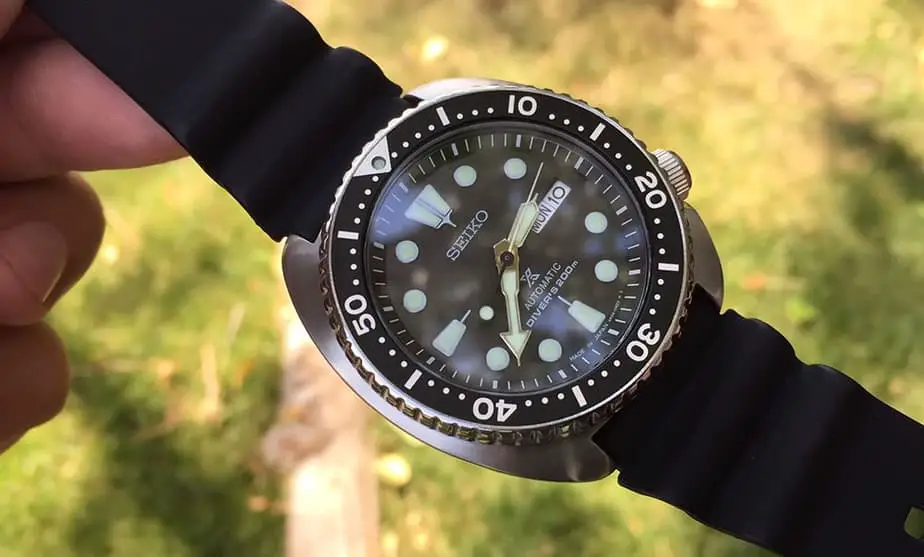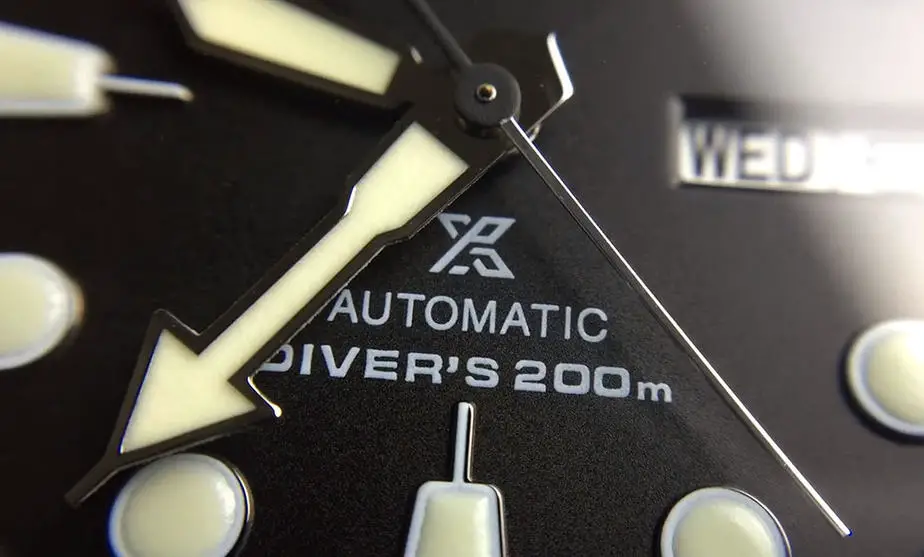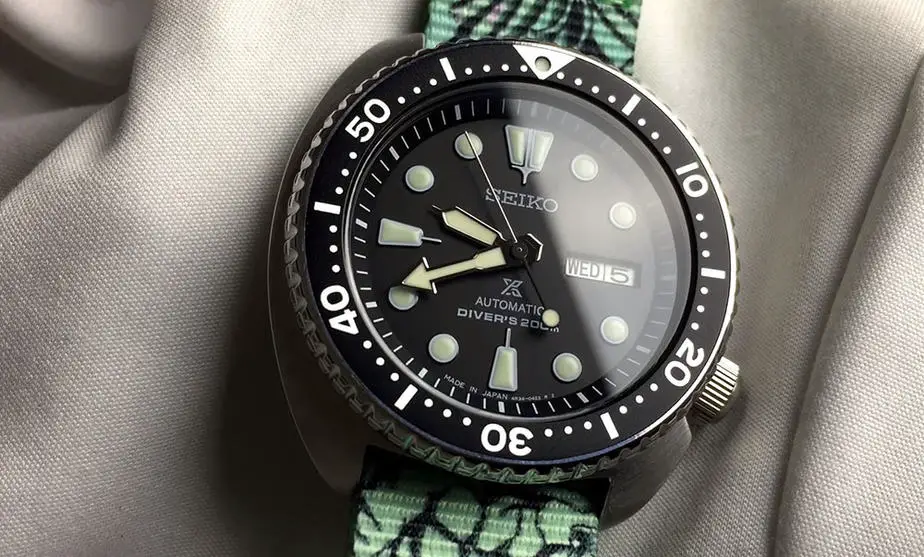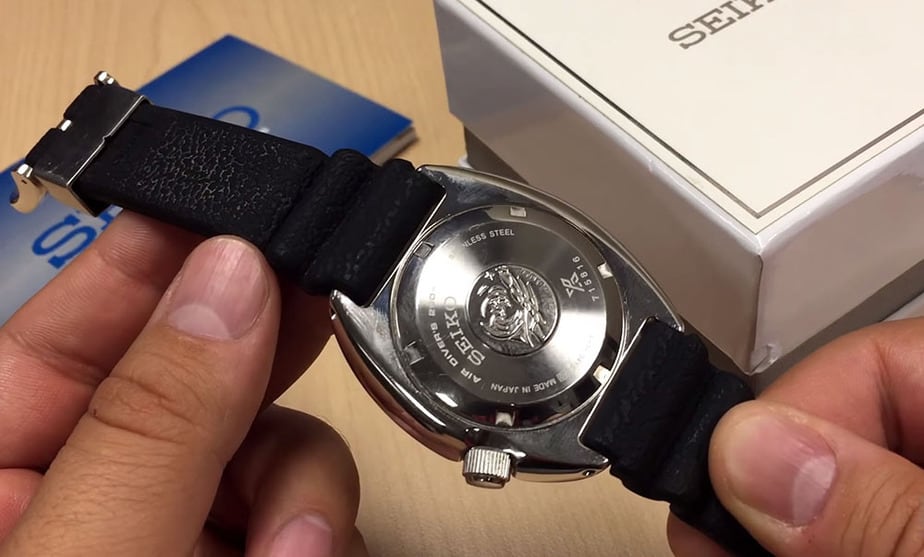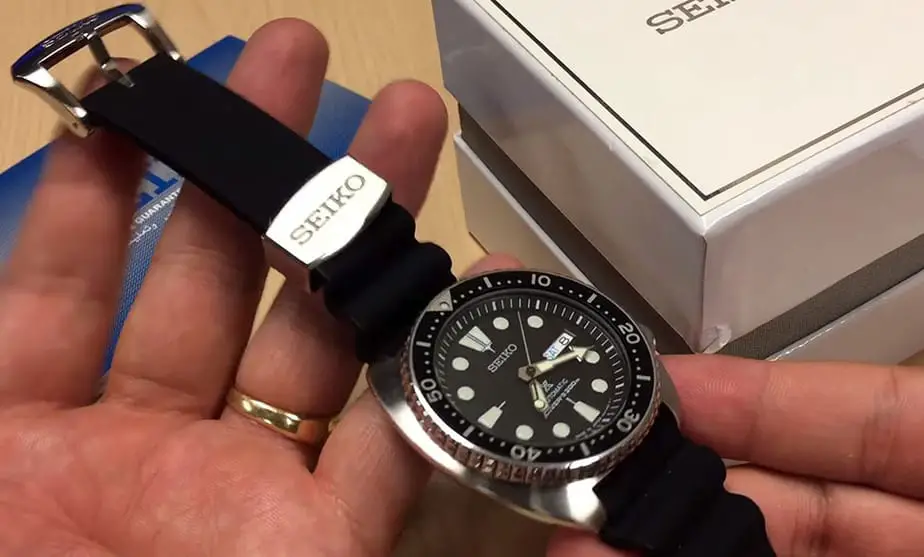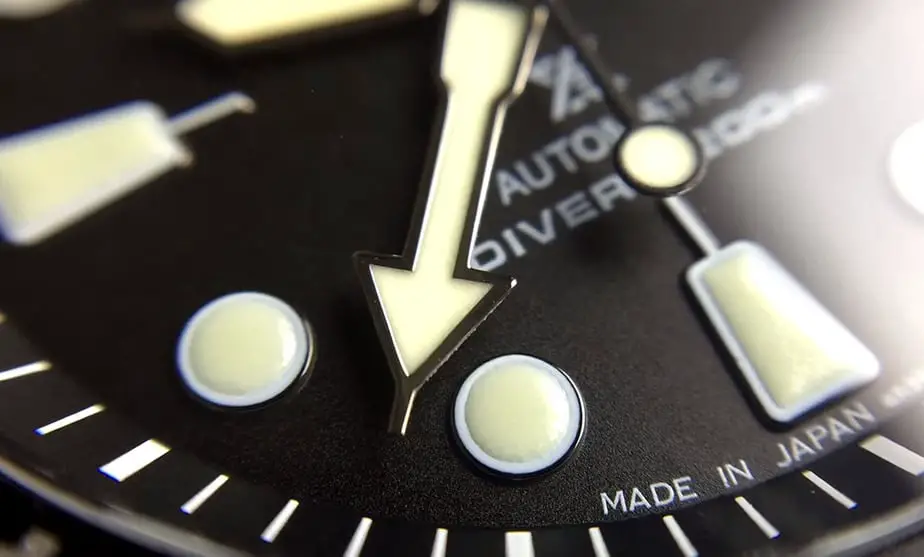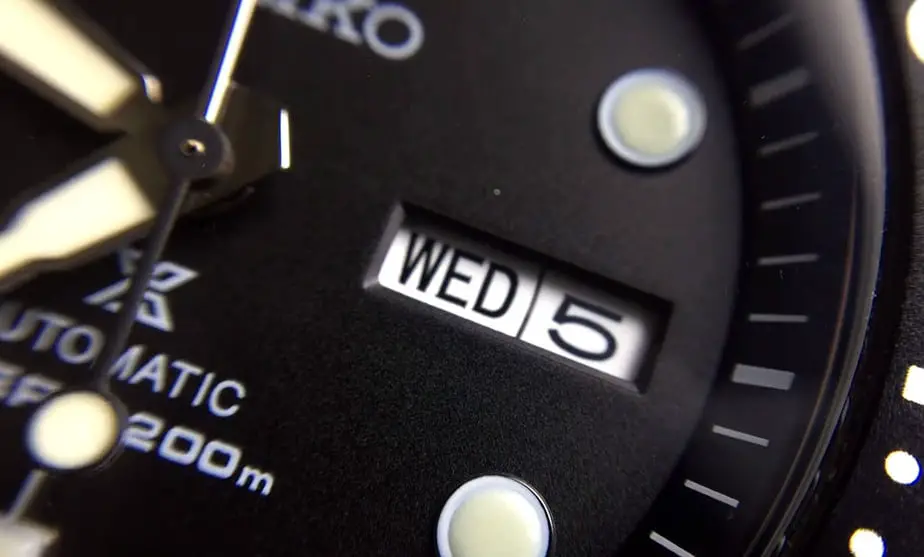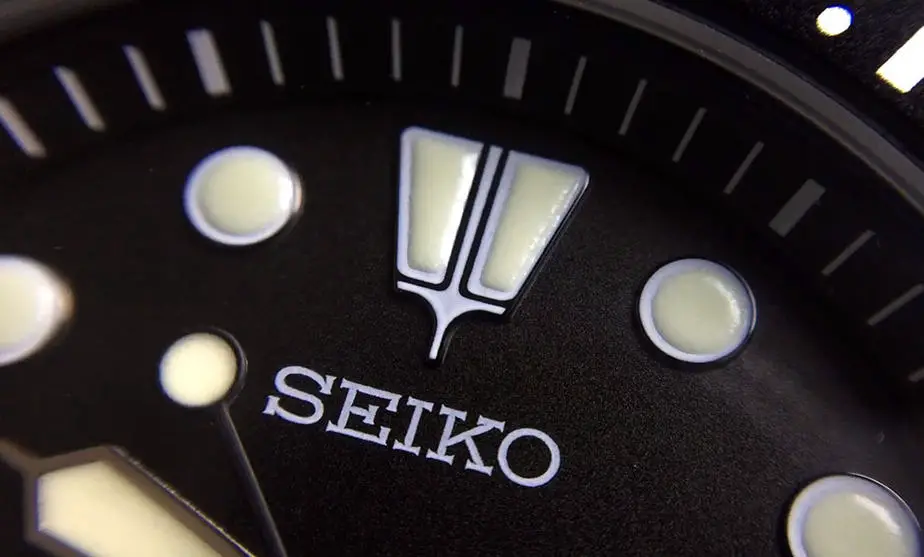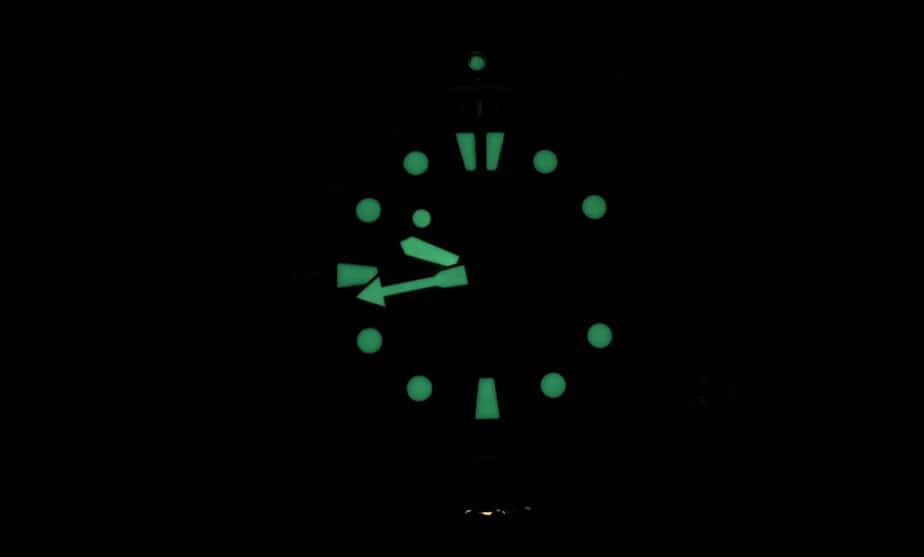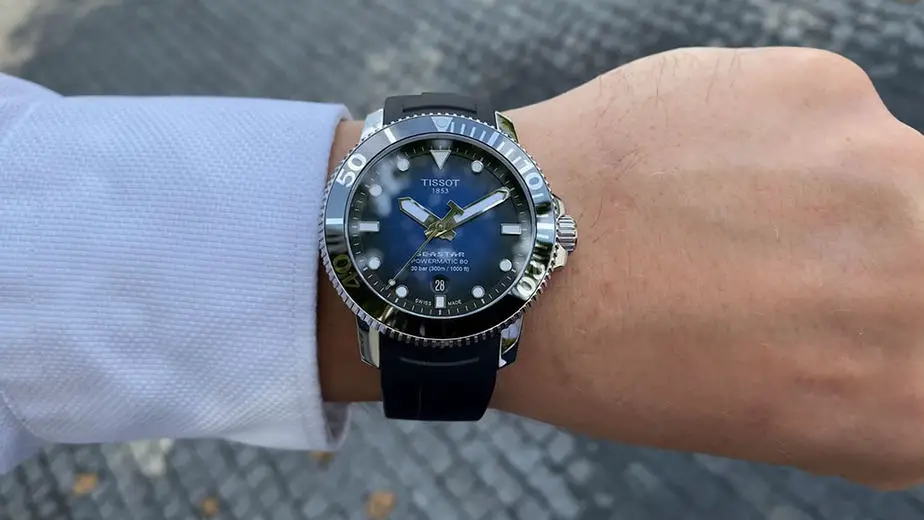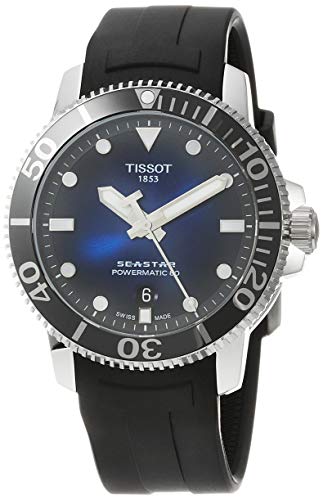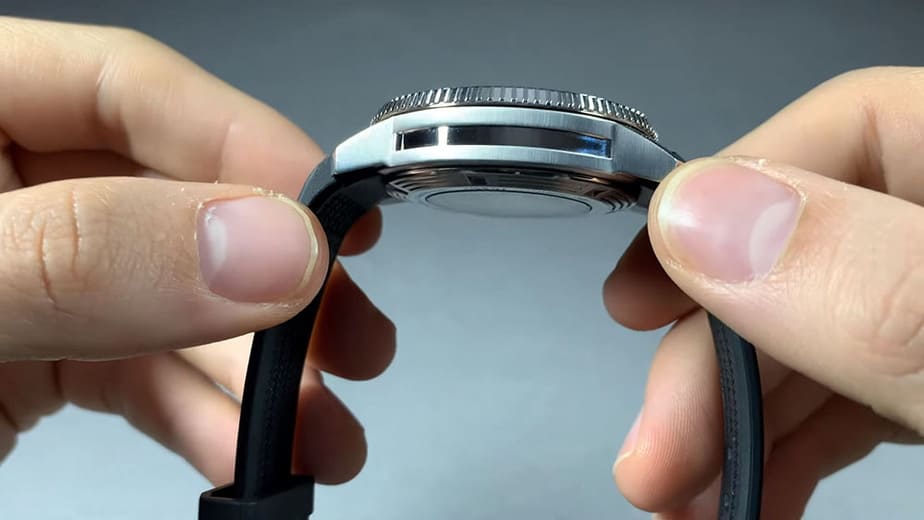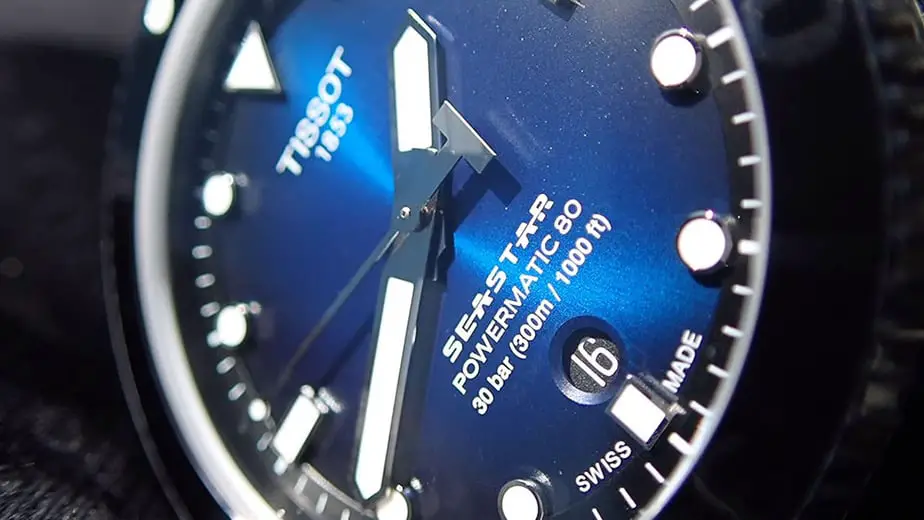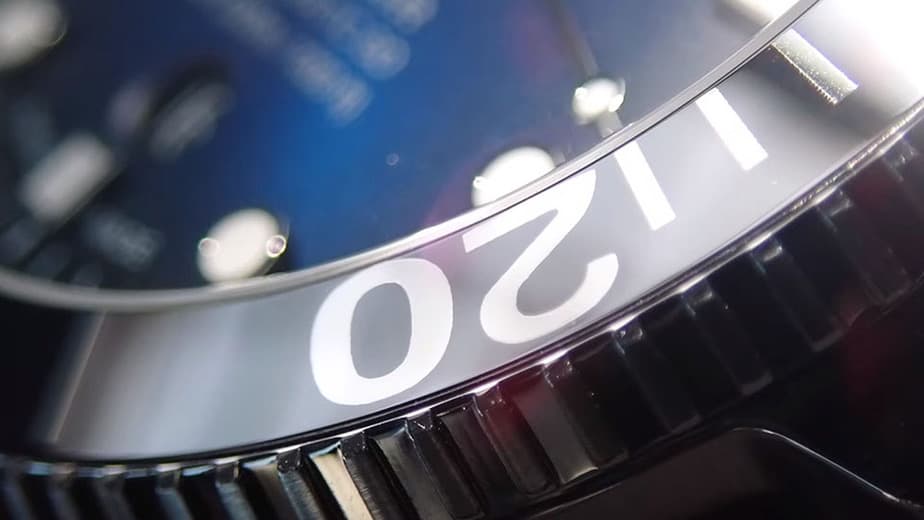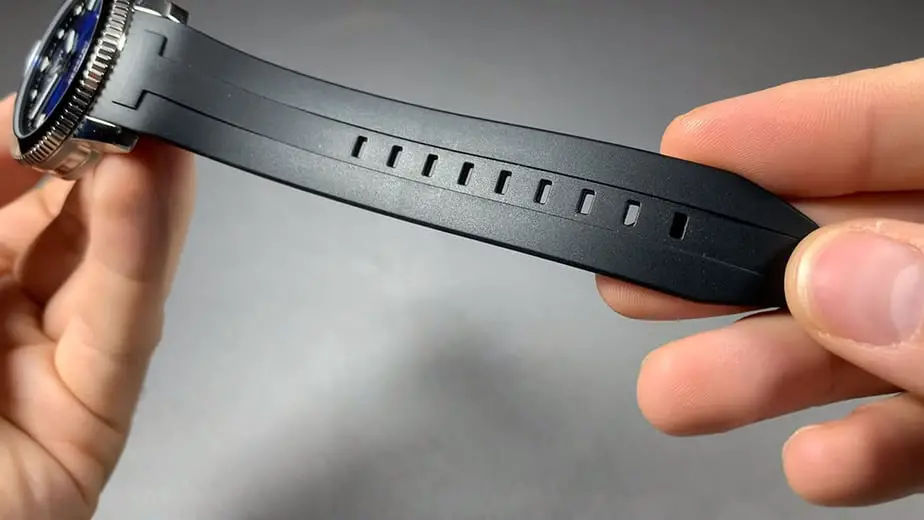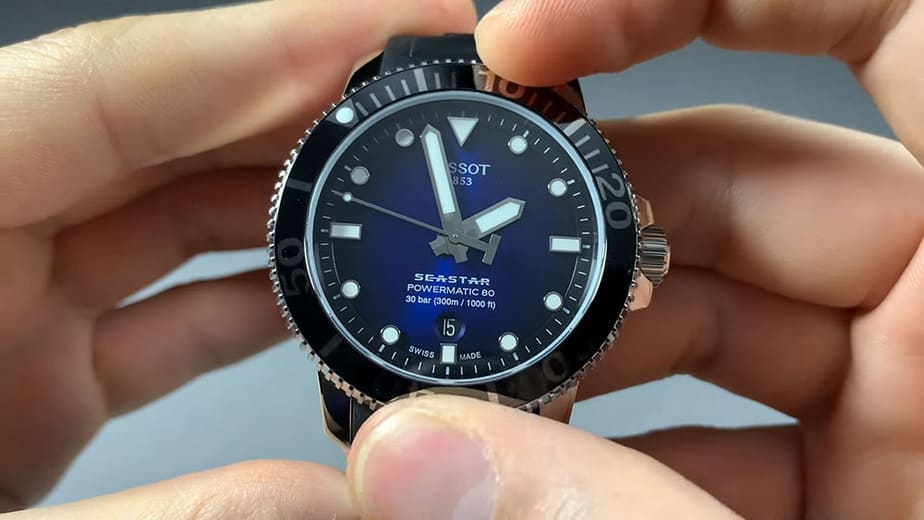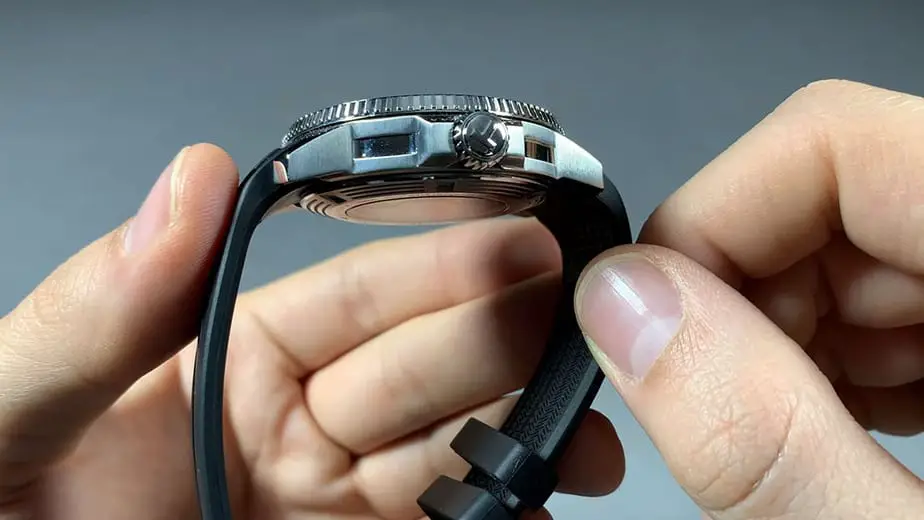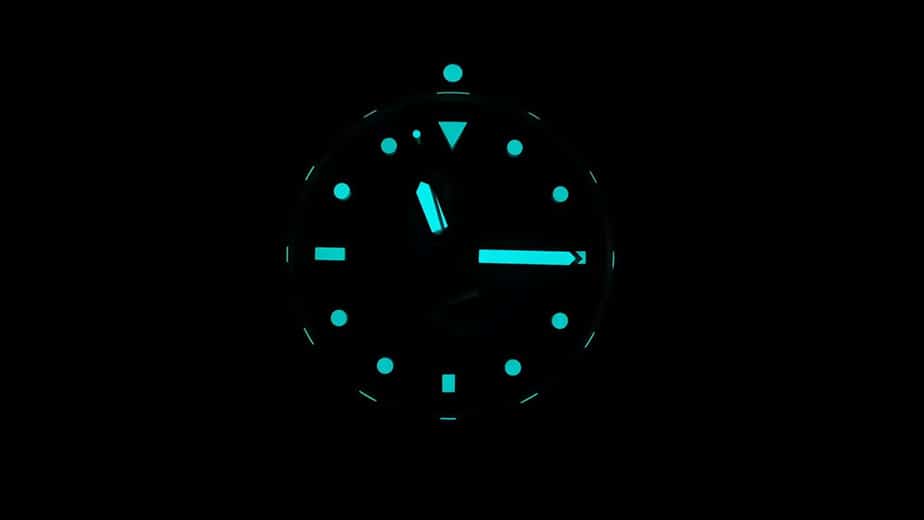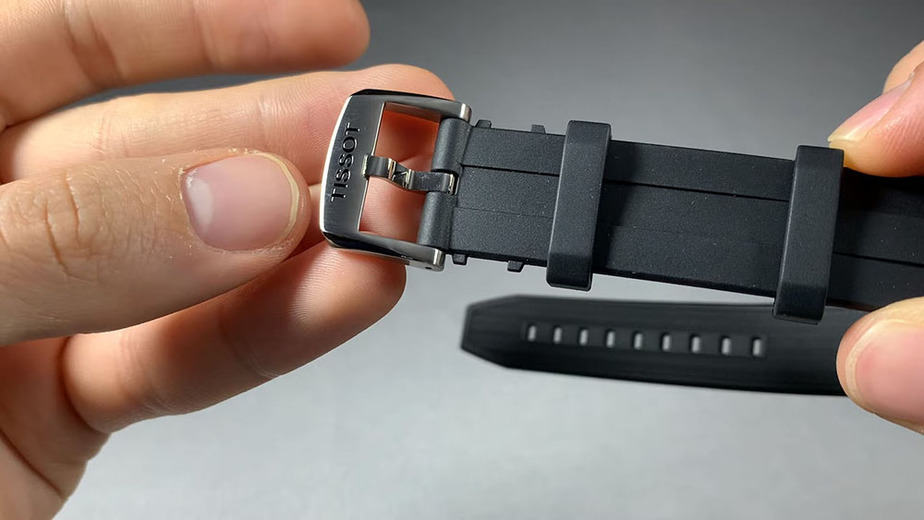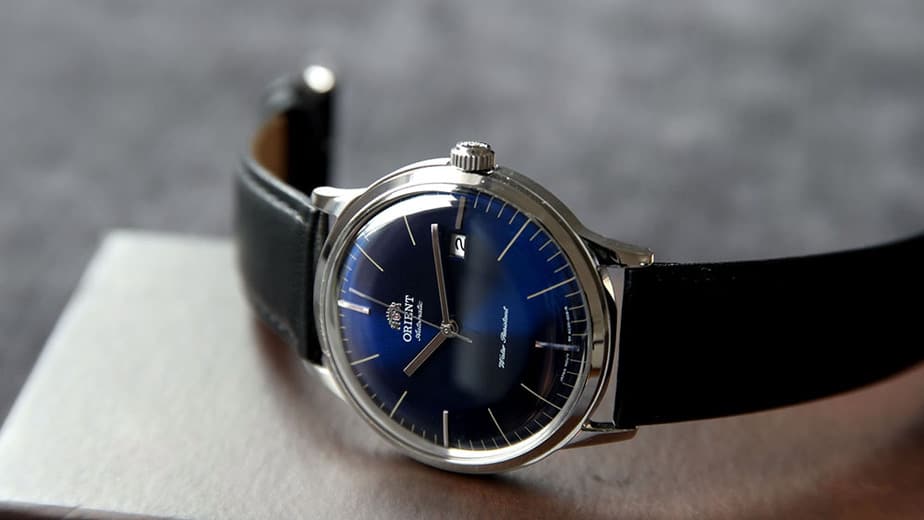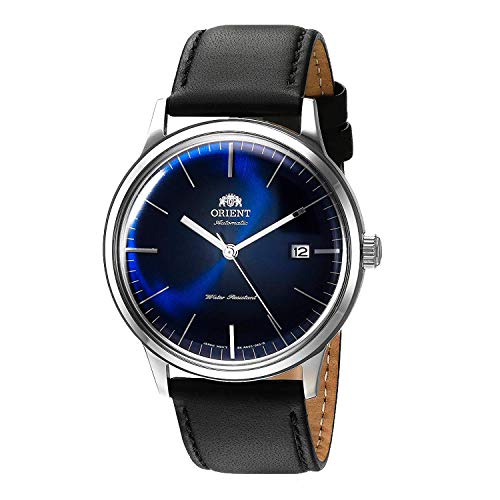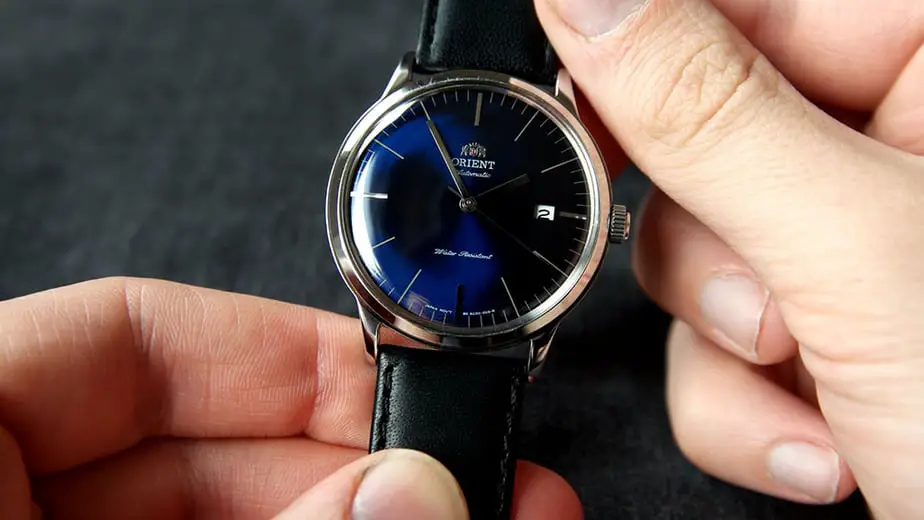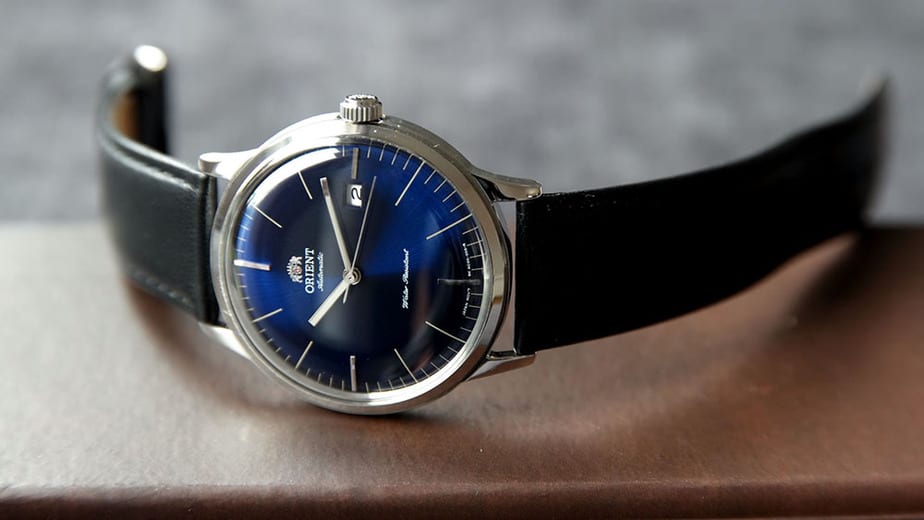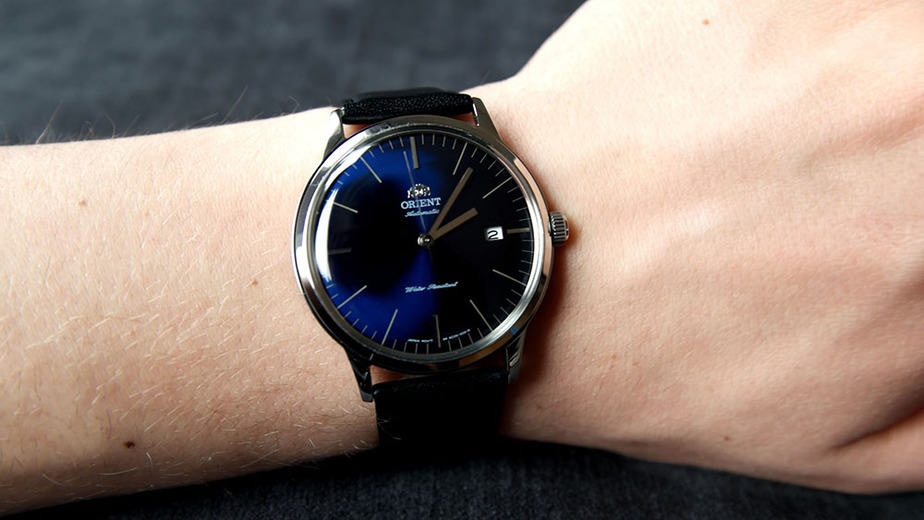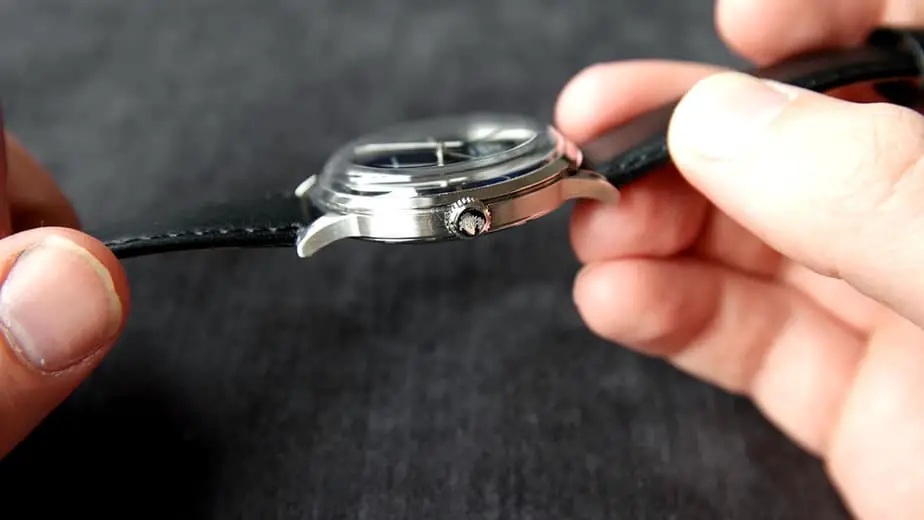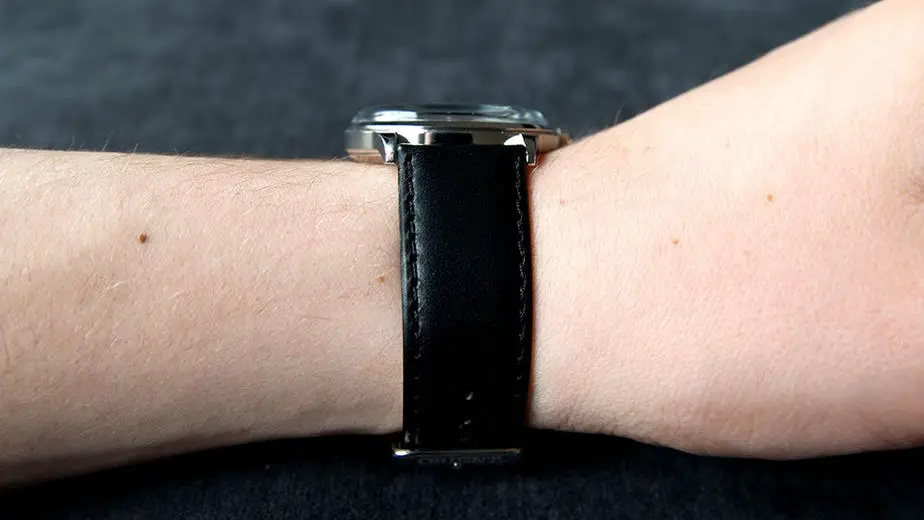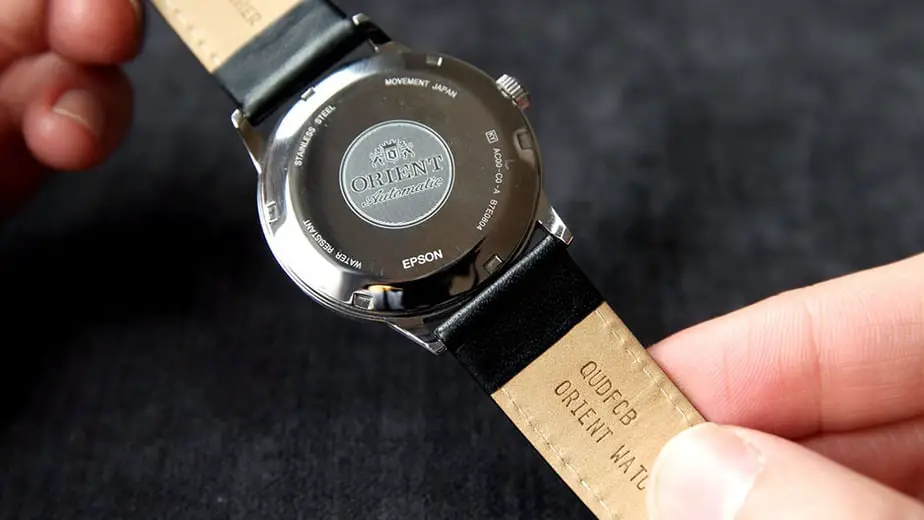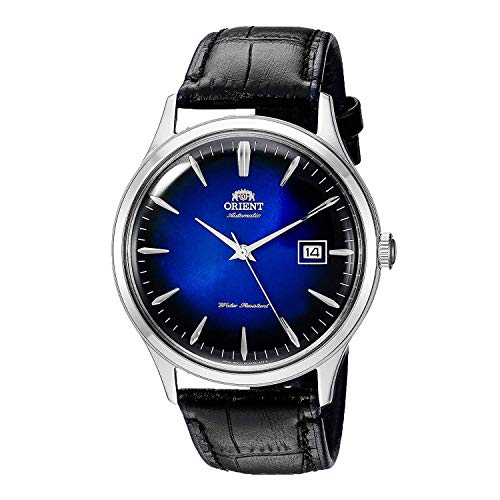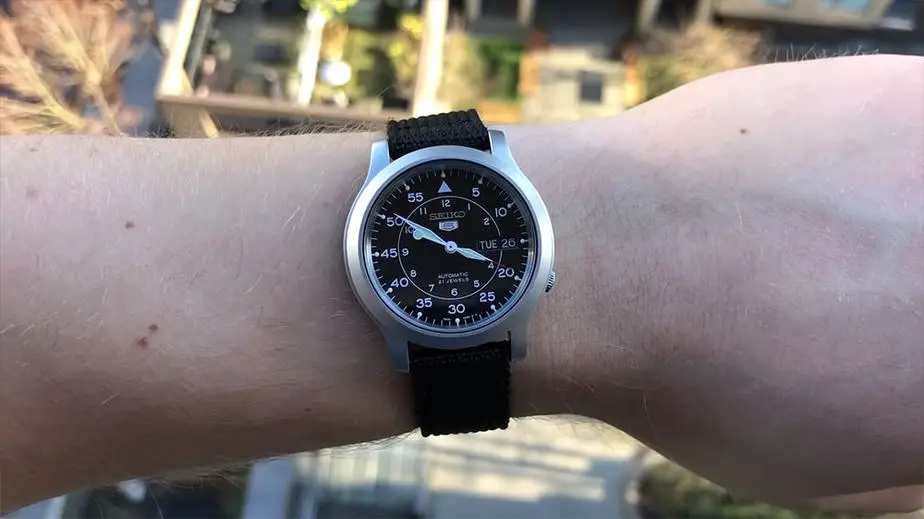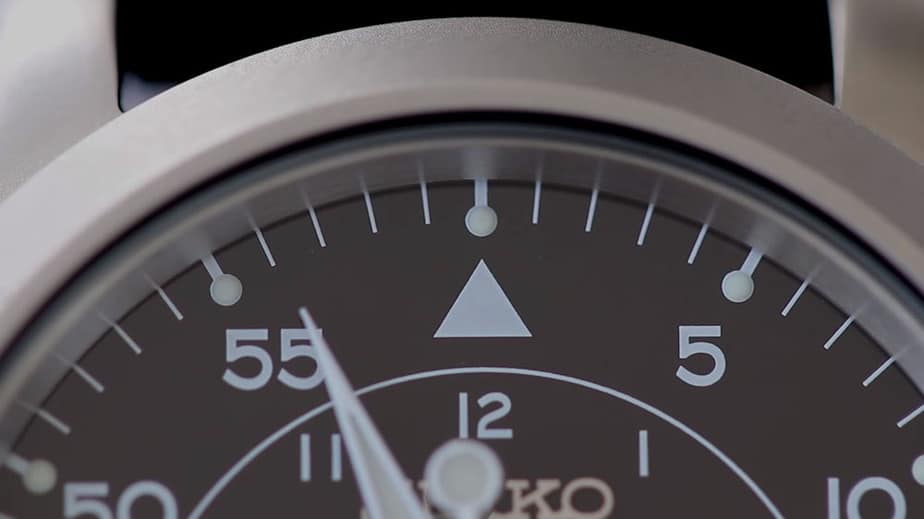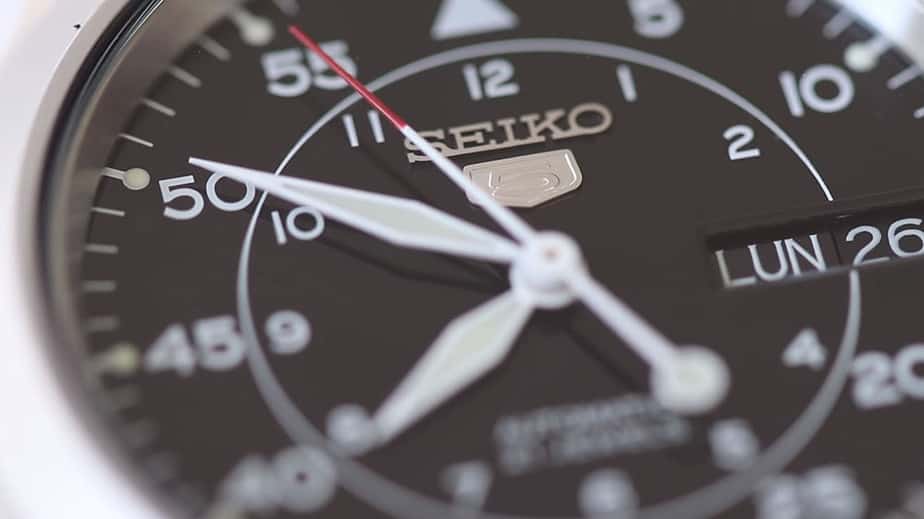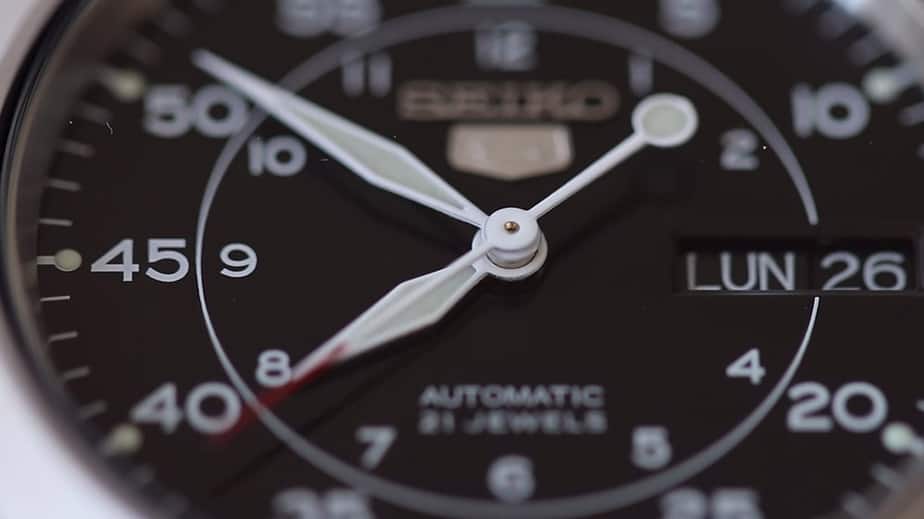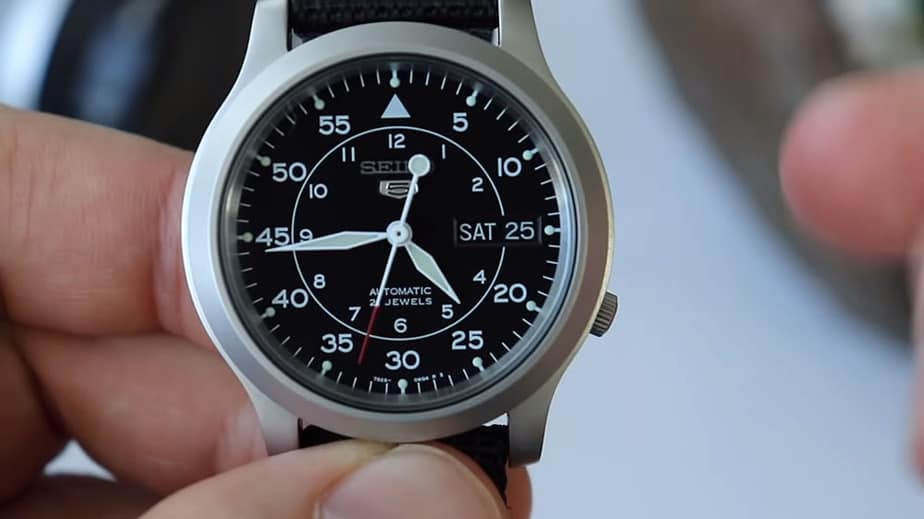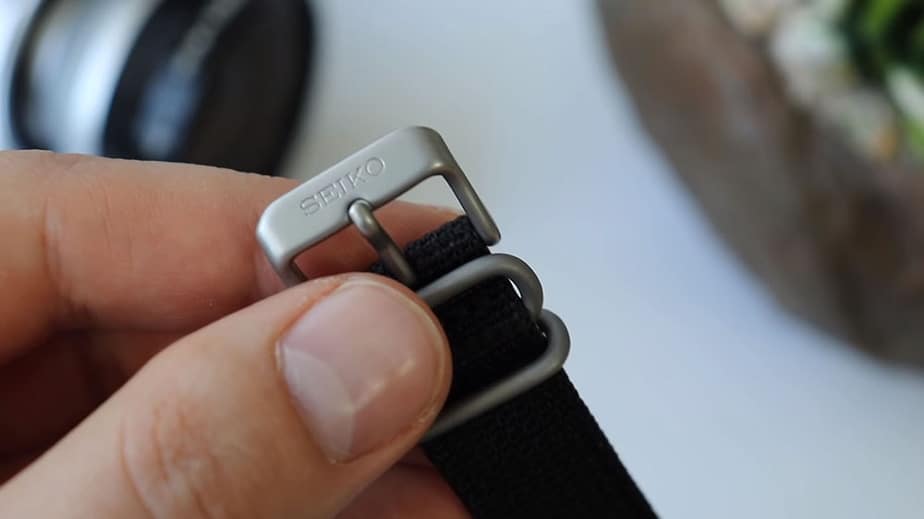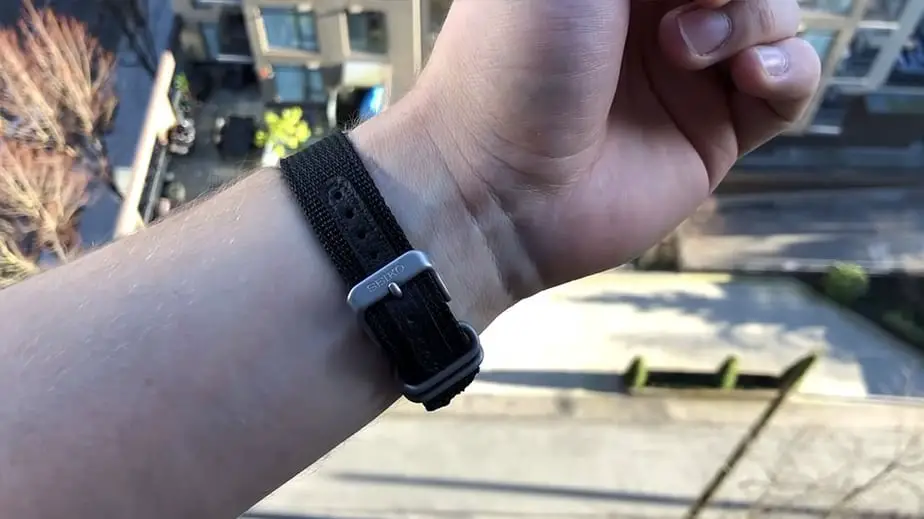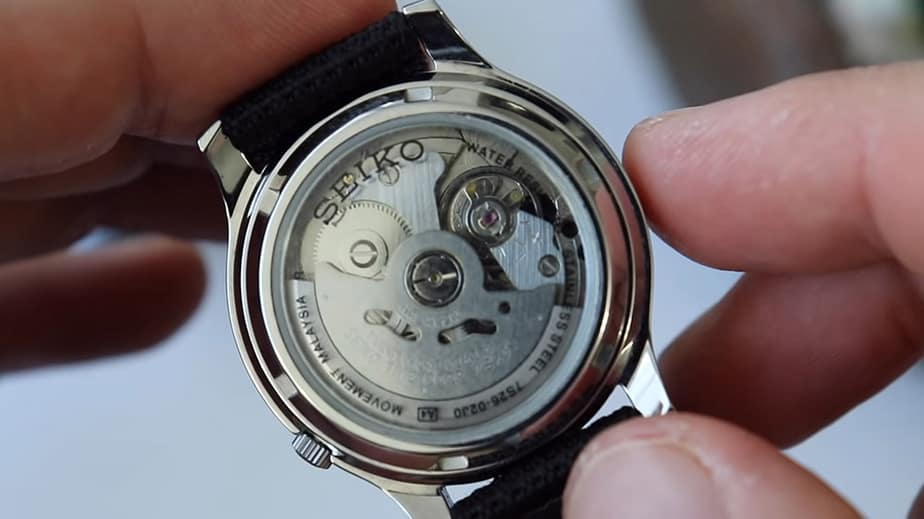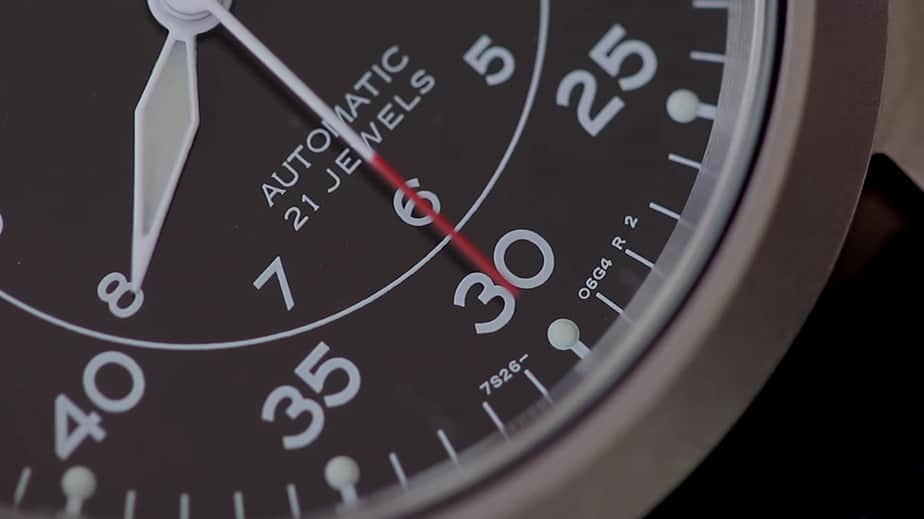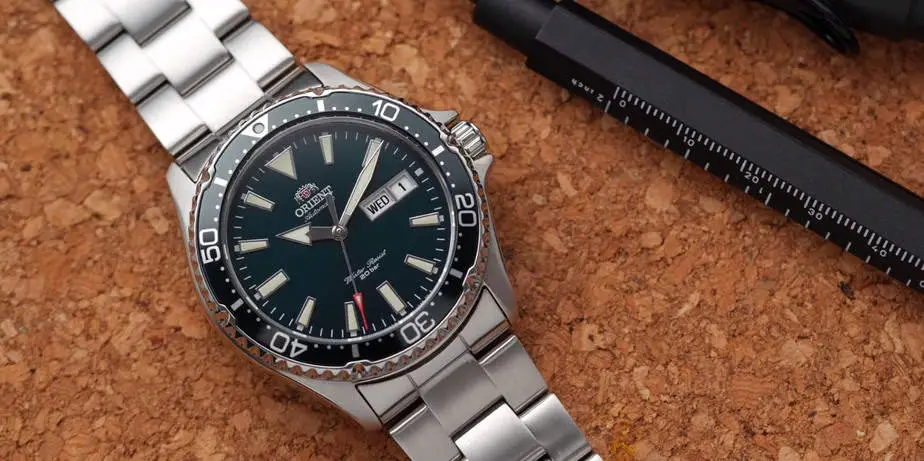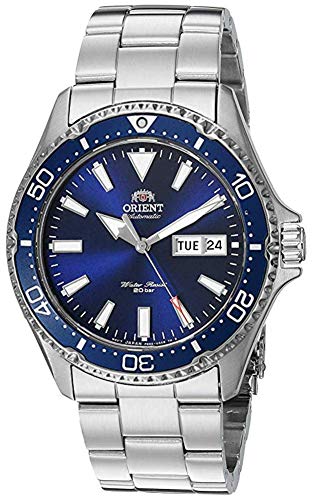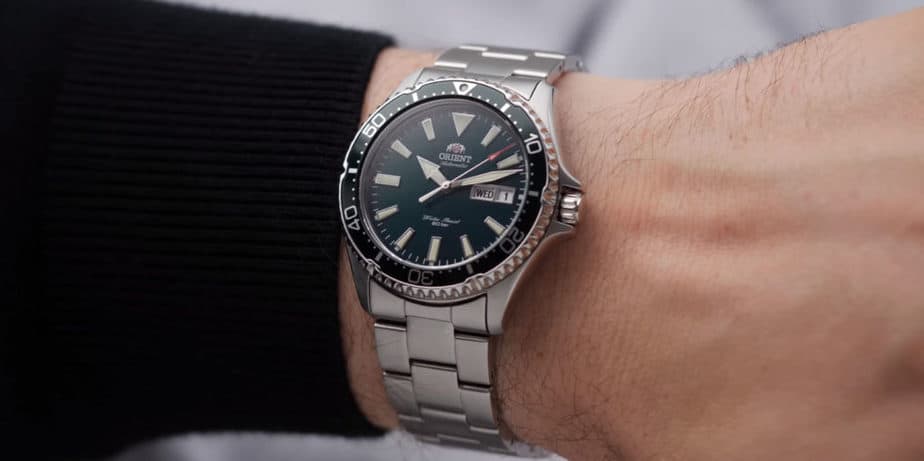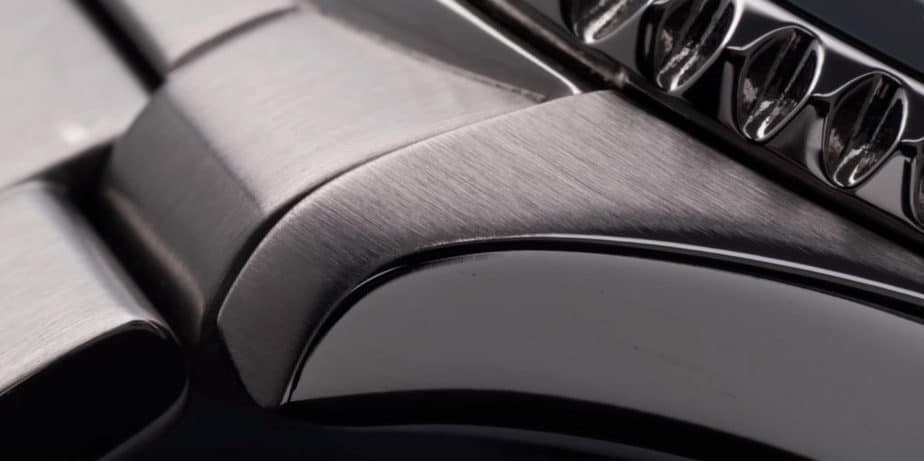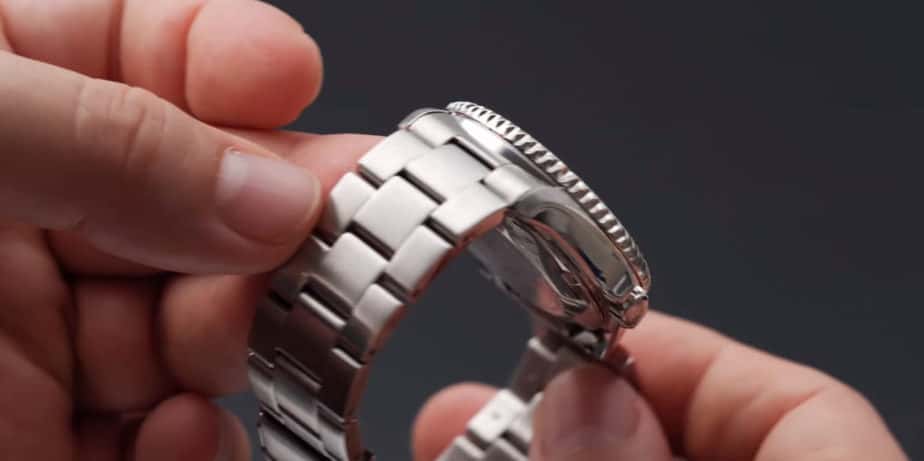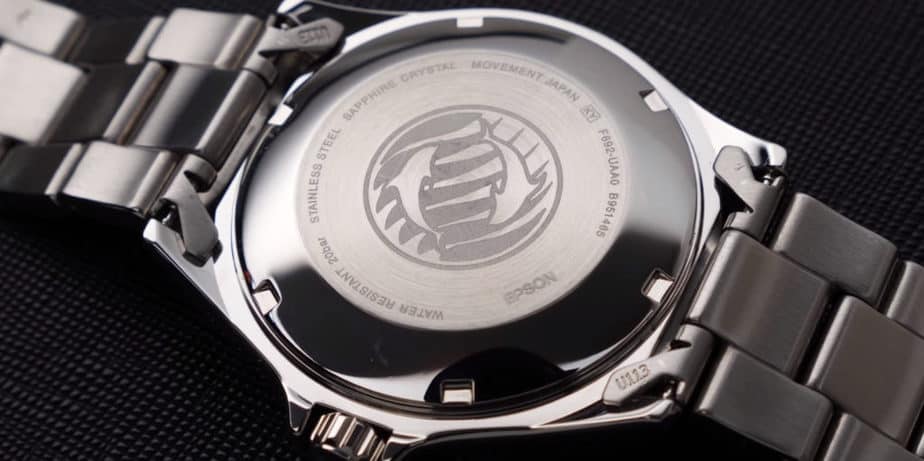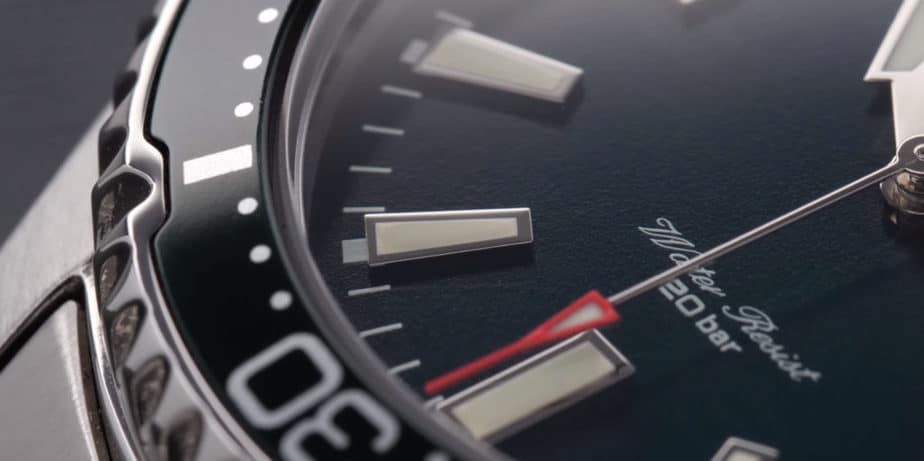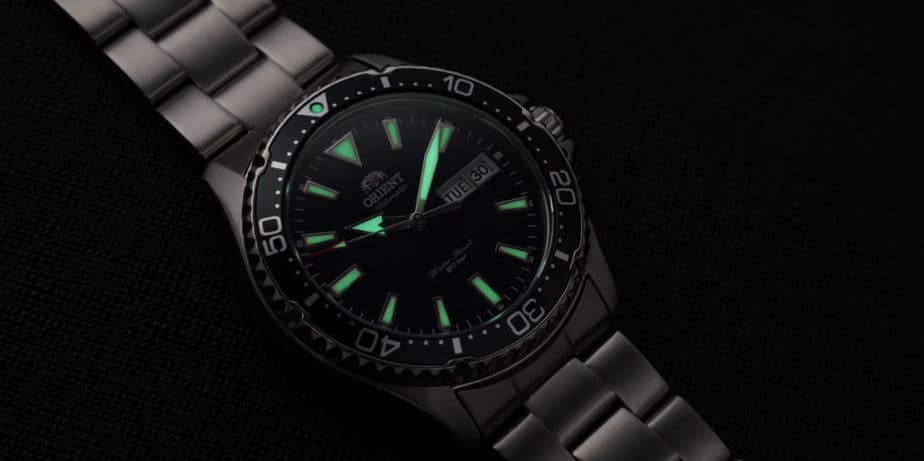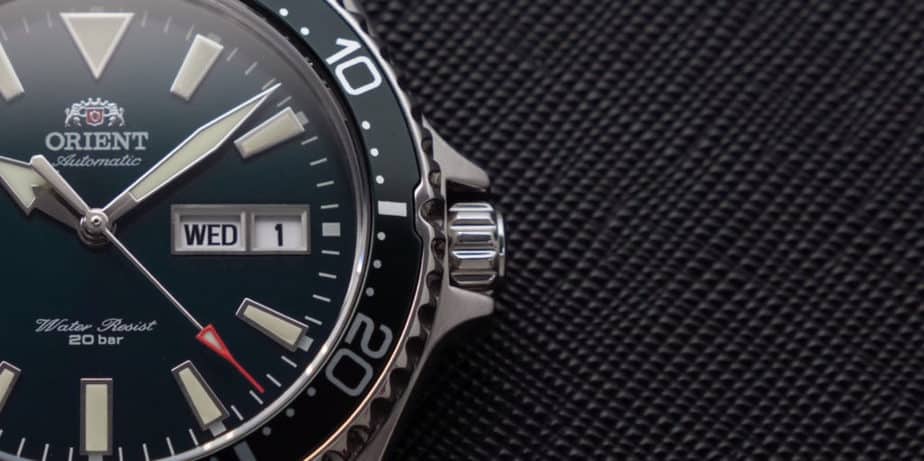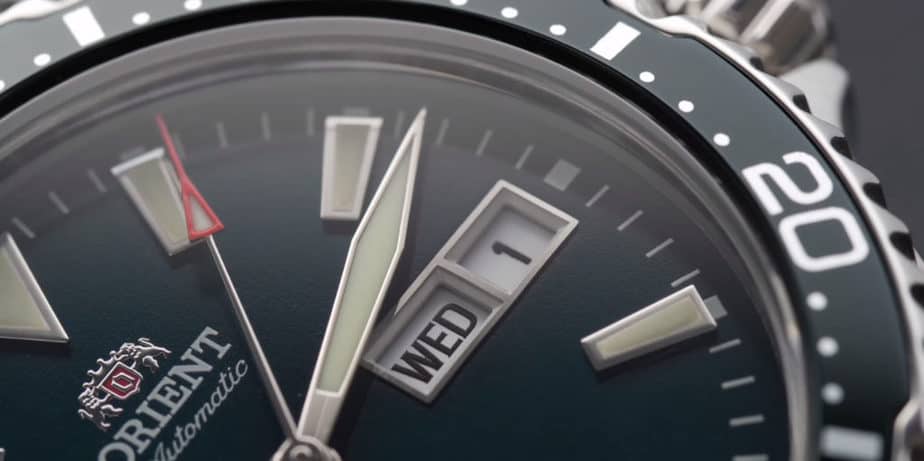It can be difficult getting your bearings underwater without a dive compass. On land you can pick out a distant landmark or geographical feature to help you navigate. Deep underwater, visibility is basically non-existent and there are no convenient reference points to use.
Also, you may be diving in murky water or find yourself being swept away in a current. These are all times when a dive compass would not only be helpful, but essential. A reliable dive compass will give you peace of mind and help keep you safe.
In this article, we will be reviewing the best dive compasses that will help you get your bearings while underwater. For each dive compass, we will be going over its features and why it is worth your money. We have also written a buying guide so that you can see the exact criteria we used for our review, as well as learn how to research a good dive compass on your own. Let’s get into it.
Our Top Picks:
Best Dive Compass Review
Chances are you are diving with a dive computer that has a compass installed – so why do you need a separate analog compass? For starters, it’s always good to have a back-up. You never know what might happen to the dive computer; it can get damaged, malfunction, suddenly die on you, etc. Keeping an analog dive compass with you will give you peace of mind, and below are the best ones.
Suunto SK8
- Phosphorescent compass card High tilt compensation +/- 30°
- Large side-reading window
- Faster stabilization and enhanced readability
Starting this list off we have the Suunto SK8. This dive compass will provide accurate, reliable bearings to keep you headed where you want to go. The compass housing is filled with liquid to prevent bubbles from forming, and the compass itself is highly responsive and will provide you accurate readings with no delay.
The Suunto SK8 has both Northern and Southern hemisphere orientation because of its upgraded magnet. In other words, you can use the SK8 to explore more of the ocean without worrying about proximity to the poles messing with the accuracy of your bearing.
Next, this retractable compass is so convenient because of how smoothly it snaps into the starting position once you release the tension. If you have difficulties keeping your dive compass level, the SK8’s 30° tilt tolerance makes this 2-3 times more forgiving to use compared to a run-of-the-mill dive compass.
Furthermore, the phosphorescent compass card of the SK8 makes it easier to read in low-viz conditions. On the bezel, twin heading indicators lets you easily align the lubber line to track your course. Lastly, the rotating bezel is great at preventing sand from contaminating or damaging your compass.
If you don’t have much time and need to get a dive compass ASAP, then the Suunto SK8 is perhaps the closest thing to the ideal best dive compass currently on the market and you can’t go wrong with it.
Sherwood Genesis Dive Compass
- Full Tilt Compass with automatic spring loaded retractor
- Retractor cable made with coated high strength nylon cable. Extremely Durable!
- Northern Hemisphere Compass Design
With high contrast markings and large windows, the Sherwood Genesis dive compass promises foolproof navigation for all divers. To further increase its visibility, its dial is also luminescent.
Mounting the Sherwood Genesis is very straightforward. It comes with a retractable mount that you can connect to your BCD. The Genesis is easy to reach when you need it, and will stay out of your way when you don’t. The retractable lanyard is durable and holds enough tension that it pulls the cord taut, yet it still remains easy to pull out and use.
Furthermore, the high-strength magnets ensure the compass stays responsive and provides an accurate reading. The Sherwood Genesis has a tilt threshold so that you do not need to keep it perfectly level in order to navigate with it. The reading may be negatively affected if there is any ferrous material (i.e. iron) nearby.
Overall, this dive compass is well-built and durable enough to take a few knocks. Its bezel is easy to rotate, even with thick gloves on. The extra large side window and clear markings makes navigating a straight course a breeze. The retractable mount includes 2 different clips, and the Sherwood Genesis is great for those who prefer a retractable compass over wrist-mounted.
XS Scuba Retractable Supertilt
- Installed on XS Scuba retractor (p/n CL16)
- Attach to diver with split ring or snap hook
- Uses rubber boot hose with mount nut
Next we have the XS Scuba Retractable Supertilt. Don’t be fooled by how small it is, this dive compass is incredibly easy to read underwater because of its large vertical interior and luminous dial. On the bezel, the Supertilt has numbered headings for every 30° and smaller markers for every 5°.
The Supertilt comes with a stainless steel retractor that you can connect to a split ring or snap hook to your BCD. The benefit of a retractor cord is that once you are done with the compass, you can simply release the tension and the compass will snap back into its starting position. You can even use the quick-release buckle to detach the compass entirely if needed.
And of course, if the name isn’t enough of an indicator, the Supertilt can be used freely even at high tilt angles of +/- 30°. This is a great choice if you prefer your dive compass to be out of your way when not in use and you tend to use the compass at an angle.
If all of that doesn’t sell you on this product, then perhaps its attractive price will. The XS Scuba Supertilt is surprisingly affordable and it is every bit as good as its more expensive counterparts. The only downside is that you will have to purchase a mount separately, but if you already have one then the Supertilt should fit with most. Overall, this is a solid compass for casual navigation and swimming.
Oceanic Wrist Mount Compass
- Proprietary design ensures quick response and smooth movement
- Top or side reading
- Oceanglo_ luminescent floating card absorbs light and glows approximately 7 times faster and longer than other materials
Next up is this wrist-mounted offering from Oceanic. This analog dive compass is a great choice for those who don’t like the thought of attaching retractable cords to their compass. It is designed to give you your bearings at a glance, so its accuracy is high and it responds well to movement.
The Oceanic dive compass has a large rotating bezel which lets you plot your course and the high visibility lubber line helps you to stick to it. The bearing indicators are very large so you will have no issues reading it.
We were surprised at how small this compass is with dimensions of 2” x 2” x 2” and a weight of 0.81oz, the Oceanic dive compass will not be a hindrance to your scuba diving kit, which is ideal for reducing drag and keeping a slim profile.
Visibility is further increased thanks to the Oceanglo-luminescent floating card which helps you to use the compass in the dark. The lume absorbs light and can reflect it up to 7 times quicker than other products and it lasts for longer too. A solid choice for a dive compass.
Trident Glow In the Dark Dive Compass
- Highly Accurate Oil Filled Compass Module, Scratch Resistance Polycarbonate Case, Top and Side Reading Design.
- Anatomical Wrist Band, Side Window for Quick Reference & Gun-Sight Accuracy, Reliable Underwater Navigation.
- Easy-to-Read Bearing Indicators, Luminescent Display, High Visibility Lubber Line, Great in Limited Visibility and Low Light Conditions.
The Trident Glow In the Dark dive compass is a retractable compass that is known for its clear and long-lasting visibility underwater.
You can mount this dive compass to your belt or BCD using the swiveling gate snap clip, or use the retractor clip for easy underwater navigation. The Trident dive compass is quite compact, measuring in at 2.5” in diameter and a total length of 5”, so you will not feel hindered at all during a dive no matter how you choose to mount it.
Small dive compasses always run the risk of being hard to read, but the Trident dive compass’ glow-in-the-dark dial means you can easily read it even in the dark. So whether you are diving deep or diving at night, you can rely on this compass to point you in the right direction.
Additionally, this compass has a side view window to let you see your bearing at a glance without needing to hold the compass level. This is a useful feature because the Trident dive compass may have slight inaccuracies when tilted.
Aqua Lung Compass Module
- Includes Compass Module
- Large easy to read numbers
- Large side view window allows for easy and accurate navigation
More experienced divers may prefer to add on a compass module to their dive computer or console, and if Aqua Lung is your preferred brand then this module is worth consideration.
The design of the Aqua Lung compass module emphasizes readability by using large, clear numbers on the display. Both the dial and bezel are numbered every 30°, with smaller markers for every 10°. The markings for 10°, 20°, 30°, and 130° have fluorescent markings to help divers figure out the orientation of the compass even while in the dark.
The interior face of the Aqua Lung compass module is luminescent which further helps you to read your bearings in low-light conditions with its glow. Overall, the Aqua Lung compass module is a solid addition to your console, and it can be kept as a back-up should your main compass malfunction.
Oceanic SWIV Module
- Proprietary design ensures quick response and smooth movement
- Top or side reading
- OceanGloluminescent floating card absorbs light and glows approximately 7 times faster and longer than other materials
What makes Oceanic dive compasses stand out is the Oceanglo luminescent floating card which provides a bright and glow that lasts longer than all other compasses on the market. This means you can use this compass in low-viz conditions, such as deep diving or night diving, with little to no issues. Oceanic claims that Oceaglo lasts 7 times longer and glows 7 times faster and it is very easy to see (excuse the pun) that this is true.
Furthermore, Oceanic the SWIV module uses advanced technology to make sure you get fast and accurate readings of your bearing. The design of the SWIV module lets you easily view it from many angles. Its strong red lubber line lets you read it from the top or side, and it doesn’t even have to be completely level. This wrist dive compass is definitely something you should consider adding to your kit.
Scuba Choice Diving Compass Module
- Compass diameter: 2-1/3"
- Glows in the dark
- Max depth: 80 meters.
The Scuba Choice diving compass doesn’t look like much at first glance, but what’s impressive about it is its mounting versatility and compact size. It only has a diameter of 2.3” and the module mount lets you decide how you want to attach the compass to your equipment, making it highly versatile. Depending on how specific your mounting needs are, you may need to purchase a separate module housing to make it work.
Furthermore, the Scuba Choice dive compass provides accurate readings with a maximum working tilt of 25° which is very generous. It also has a maximum depth restriction of 80 meters, and in water temperatures of -5°C – 55°C, and it is highly unlikely you will be diving in either of those extremes.
For the price that the Scuba Choice dive compass is available for, you are getting a very affordable option that is slightly less responsive than other dive compasses. This is clearly designed to be an entry-level, budget model and for that it is a fantastic piece of kit that will serve you well for your first few dozen dives as a beginner.
Cressi Underwater Compass
- The Cressi Compass with Strap and Hose Mount is a modern instrument that enables easy reading in all conditions.
- The magnetic compass card moves extensively in all directions, so that reading is accurate even if the instrument is not held perfectly level. The...
- Reading can take place by looking at the instrument from above or, more easily, through a Gun-Sight Accurate special window that enables more precise...
Yet another dive compass worthy of your consideration is the Cressi underwater compass which has two versions: a model with both a hose mount and wrist strap, as well as one that is a module to fit into your console to give you a couple of options on how to mount it.
At this point you should be well aware that dive compasses need to be held at a level position in order to produce the most accurate readings, and this compass doesn’t offer as much tilt tolerance as some of the other compasses in this review. If you struggle with keeping your compass level, this is something to keep in mind.
However, the Cressi compass makes it for it with its gun-sight window which lets you precisely track your heading just by glancing at it from above without the need to level the compass. The Cressi underwater compass also has a red lubber line to assist with orientation as well as a rotating ratchet bezel that includes a double pointer.
Additionally, the luminescent backing offers clear visibility in low-viz conditions. Each marker on this compass indicates a 10° interval and it helps you to distinguish your bearing. Cressi is well-known for making quality scuba equipment, and the underwater compass is another solid product from them that won’t break the bank.
Best Dive Compass Buying Guide
Diving can be some of the most rewarding experiences you can get out of life… when everything goes to plan. But what about when it doesn’t? When you find yourself in an unfamiliar situation while diving, it can be terrifying if you don’t know how to navigate your way out of it. That’s why it’s important to always dive with a compass. In this section, we will go over everything you need to know to help you select the best dive compass for your needs.
Digital or Analog
Dive compasses come in either the digital or analog variety.
When you imagine a compass, you are probably thinking of an old-school analog compass. These are the ones that look like a fancy watch that tells you your bearing instead of the time. They are easy to care for and repair, and they tend to be cheaper than their digital counterparts.
The simplicity of their design makes them long-lasting, plus they don’t require a battery to function. They are versatile because you can mount them anywhere on your equipment. If you are someone who tends to forget to charge your electronics, an analog dive compass is for you.
Digital compasses are usually an integrated part of a dive computer. A digital dive compass uses sensors to detect the earth’s magnetic field. Since technology is so fancy nowadays, digital compasses tend to come with other features like a thermometer, barometer, and watch functionality (time and stopwatch).
Additionally, digital compasses are easier to read but are not as accurate as analog, require a battery to operate, and tend to cost more since they come with extra features. Keep in mind, when you use the battery for the first time, such as right after replacing it or after a fresh purchase, the compass will need to be calibrated.
Tilt Tolerance
A compass’ tilt tolerance is how far off a zero degree plane it can be tilted before the needle gets stuck. As you can imagine, the larger the tolerance the better. That said, a compass with a high tilt tolerance will be thicker and heavier. In our opinion, it’s well worth the trade-off.
Size
Most dive compasses are roughly the same size. The goal is not to find the biggest or smallest dive compass, but one that is easy to see and read in low-viz conditions. A bigger one will be easier to read but also heavier, and vice versa for a smaller one.
Mounting Options
There are various ways to mount the compass on your person.
Wrist-mounted
Dive compasses can be mounted in a housing that you can wear on your wrist like a watch. Some divers find it awkward to have both a dive compass and dive computer on one wrist, so they wear them on separate wrists.
Console-mounted
Another way is to put the dive compass in a boot along with the dive computer and SPG so that all three are accessible in one place. Some divers find this method to be too unwieldy and heavy.
Retractable
Lastly, the compass can be mounted to a D-ring or attached to a clip. When you want to read the compass, you can pull it out and when you are finished, it will retract to the storage position. This is convenient and can be more expensive.
Price
You can find a reliable dive compass without breaking the bank. A dive compass may only cost tens of dollars on the low-end, to hundreds of dollars on the high-end. No matter how much you spend on one, you have to make sure it’s durable, readable, and backed up by a good warranty.
In general, having extra features will drive up the cost of a compass. Useful features like higher tilt tolerance, more mounting options, stronger magnets, a side view window and so on are nice to have and are worth paying extra for if you can afford it.
Frequently Asked Questions
What is a dive compass?
Dive compasses are water-resistant compasses that you should bring with you whenever you are diving. An analog compass contains a magnetized pointer that interacts with Earth’s magnetic field to point in the direction of magnetic north, as well as your current bearing from it.
Sometimes people confuse compasses for a GPS. A compass does not tell you your location on Earth as a GPS would. Instead, it gives you a reference point by pointing north so you can better orient yourself to head in the direction you want to go. Using your surroundings, you can navigate back to where you started without a GPS.
With that said, many digital dive compasses come with a GPS nowadays. However, in order for it to work, it must be able to receive a signal from a satellite and this signal cannot penetrate water. In other words, you will need to be at the surface to get a signal. Since most of your navigating will be done underwater, it is better to rely on a dive compass instead.
Do I need a dive compass?
There are few ways to orient yourself while underwater. If you are lucky, the water conditions are calm, clear, and there are sufficient geographical landmarks to help you orient yourself. But there is a reason why even experienced divers don’t go on a dive without a compass.
That’s because water conditions are always changing. You cannot predict if a current is going to suddenly sweep you to an unknown area, or if visibility suddenly becomes poor. When an emergency like this happens, you need to have a dive compass handy to help you make it back to safety.
If you’ve ever dived from a boat for casual snorkeling or diving, then you know how easy it is to wander far away without realizing it. Furthermore, if the conditions on the surface are poor, it may be safer to swim to the boat underwater using your compass to lead the way instead of heading to the surface.
When diving as part of a group, not everyone necessarily needs a compass as long as the group sticks together. However, it is still good to have your own as backup should you get separated or if your diving partner’s compass breaks. If you are diving alone then a dive compass is mandatory. It’s not recommended to dive alone, but if you are for some reason, then you absolutely need your own dive compass.
Which is better – digital or analog?
Please read our “Digital or Analog” section in the buying guide above.
How do I fasten a compass?
Depending on your setup, you can mount the dive compass on your wrist or attach it to your BCD. Scuba divers tend to mount the compass to their BCD in the same place as their air gauge. Some compasses include a carabiner that you can hook to one of your shoulder straps.
Wrist-mounted compasses fit into a housing that is attached to your wrist. This is a popular choice for divers who aren’t wearing a wetsuit, such as freedivers. This option takes up as much space as a large watch, and can be worn on the opposite or even the same wrist as your dive computer.
Divers who are wearing a wetsuit with long sleeves will need a larger wrist strap so your compass can fit over the extra material.
What is a lubber line?
A lubber line is a red line marked on the compass that points to the direction straight ahead. You can set it by holding your hands straight out in front of you and setting it from there. Once you’ve set your bearing, simply follow the lubber line towards your target without needing to stick your arm straight out again.
Always stay vigilant, even with a compass. Analog compasses come with a side window that you can use while setting the line, and you can easily see the line by looking straight down at the compass afterwards.
How do I hold a compass?
There is a specific way to hold a dive compass, and here is how to do it. First, extend your hands straight in front of you at eye level. One hand should be holding the compass, and the other should be setting the lubber line.
Second, align the side window with your eyes and take note of the lubber line. This is the direction that you will be traveling.
If you are using a wrist compass, you can set the lubber line by extending your hand straight towards the direction you wish to travel to. Align the side window to your eye level and look to the lubber line. Then adjust the compass towards your heading.
Now, you can use your compass by simply looking from the top-down and following the lubber line. For the most accurate reading, try to keep the compass at an even level.
How do I care for my compass?
Rinse after diving
After every dive, you should thoroughly rinse all of your equipment, and that includes the dive compass. Cleaning a dive compass is very easy to do. Simply rinse it with fresh water at least a couple of times to remove any lingering salt. That’s it!
It would be prudent of you to check your compass for any cracks in its casing. Water can enter from these cracks and damage the internal components of the compass.
Getting rid of bubbles
Bubbles can form inside the compass when it is exposed to the cold. It is generally accepted that small bubbles will not affect the accuracy of a compass, however bubbles can get larger and eventually it will be a problem. Here’s how you can remove a bubble.
To begin, you will need the following tools: 1) a syringe with a small needle, 2) a dremel with a small drill, 3) a flathead screwdriver, and 4) an adhesive and filler fluid (e.g. any type of light oil).
Now using your dremel, drill two small holes in the side of the capsule. Next, stick the needle of the syringe into the holes and remove the fluid that is inside.
After all of the fluid has been removed, use the syringe to begin adding oil to the capsule through one of the holes that you drilled. As you fill the capsule with oil, any remaining air will be pushed out through the second hole.
Now that the capsule has been filled, there should be no air bubbles remaining and you can start to wipe the capsule of excess oil. The capsule should be completely clean before you seal the holes with adhesives; they do not blend well with oils.
Finally, fill the hole with adhesive and you are done.
Help! My compass is stuck!
It’s not uncommon for a compass to get stuck. This situation can occur if your dive compass has been exposed to high temperatures and the internal components start to expand.
A common way to fix this issue, as is the way to fix many a malfunctioning product, is to tap it a few times. You may get lucky and dislodge the components that are stuck so they can move to their rightful position.
You can also try to put your compass in hot water to allow all of the components to expand. After a few minutes, take it out of the water and let it cool down. The expansion and subsequent contraction of the materials may hopefully free up the stuck internal components.*
* You follow this advice at your own risk. Always check the manufacturer’s instructions on how to address the problems your specific compass is facing. You may even be able to send it back for a replacement if it’s still under warranty.
Photo Credits: Peter Southwood, CC BY-SA 4.0, via Wikimedia Commons

